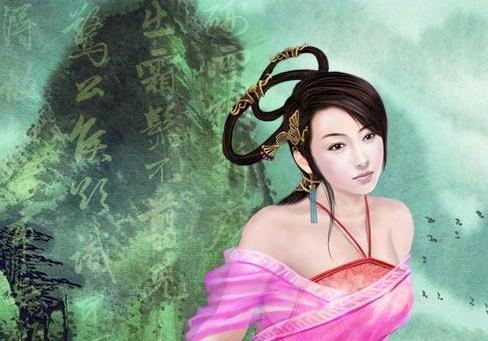
In ancient China, women would pay no less attention to their forelock and earlock than they would pay to other parts of the body. Instead, a forelock style was the quite important part of their make-up, with different styles in different time periods. For instance, in the Qin Dynasty, solemn and tidy styles were all the rage. At that time, life and death were much related to wars.
So both men and women would cut their hair on the temples at a right angle, shaving all hair under the temples. That way, they looked quite clean and tidy. In the Han Dynasty, women continued the Qin-Dynasty style for some time and later wore their temple hair into a curved hook.So, the change of hairstyles and make-up is closely related to the development of social ideology. And in some sense, they are the best reflection of the human mind. No matter how you act or think, your appearance says it all.
During the period of the early Tang Dynasty to the Northern Song Dynasty, the piled-up forelock style made a comeback in the late Tang and the Five Dynasties. In the Northern Song Dynasty, the "cloud tip-shaped forelock style" came in fashion. Women combed their forelock into cloud-like coils lying horizontally above the brows and the number of the cloud coils varied from one person to another.
This forelock style enjoyed great popularity after the Xuanhe Period, presumably in the late Northern Song Dynasty and the Southern Song Dynasty. It happened that this forelock style was also seen in the findings of the tomb of Zhang Shiqing built in 1116. It showed that sticking a paper-cut pattern to make the hair more beautiful was not a practice only a hair-style master could accomplish. It was relatively an easy way of make-up.
It was no easy task to prepare the cloud tip-shaped forelock style. Women from poor families would find it hard to do it due to limited time, even if they wanted to. So sticking a paper-cut pattern was their choice to stay in fashion. Today in Shanxi province, the maid image in the Goddess Hall of the Jin Temple of the Northern Song Dynasty provides a three-dimensional and lifelike example of the multi-strand hairstyle.